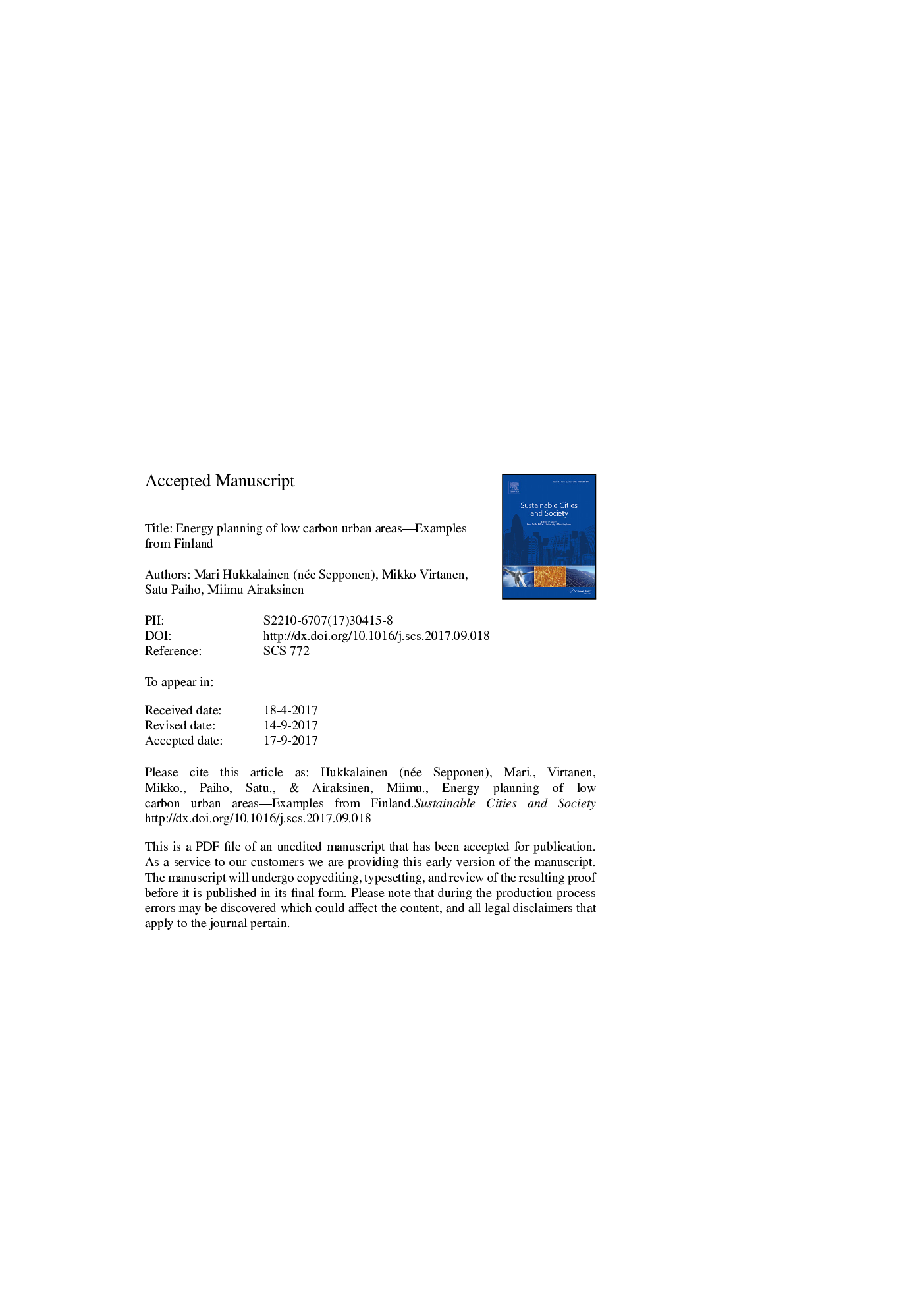| Article ID | Journal | Published Year | Pages | File Type |
|---|---|---|---|---|
| 4928128 | Sustainable Cities and Society | 2017 | 53 Pages |
Abstract
During urban planning, city planners and municipal authorities make various choices that impact districts' energy efficiency and emissions significantly. However, they often lack information about the actual effects of the design options. This paper describes a methodology, embedded to a tool called Kurke, that aims to support the planning of sustainable and energy efficient urban areas by analysing the energy performance of city plans and the impacts of their energy design alternatives on carbon dioxide emissions during planning. The methodology supports holistic energy analysis of urban areas, including energy demand of buildings and transport, and comparing 10 alternatives for local energy supply. The methodology is tested in two Finnish residential and mixed-use areas. The improved transportation plans can reduce CO2 emissions 10-20% compared to the business-as-usual design in case areas. CO2 emissions from buildings' heating can be reduced 18-24%. The total CO2 reduction potential of urban planning choices varies from 2% to 78% in case areas. This shows the significant role of urban planning in reducing CO2 emissions. Therefore, it is important that urban planners understand the impacts of the design decisions. Kurke tool offers such support with fast and practical evaluation of the planning options.
Related Topics
Physical Sciences and Engineering
Energy
Renewable Energy, Sustainability and the Environment
Authors
Mari Hukkalainen (née Sepponen), Mikko Virtanen, Satu Paiho, Miimu Airaksinen,
